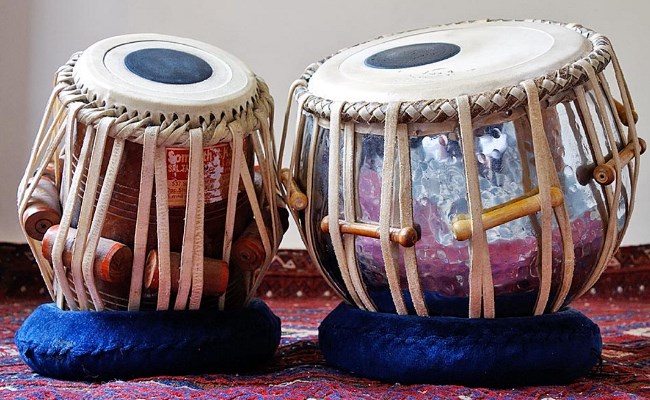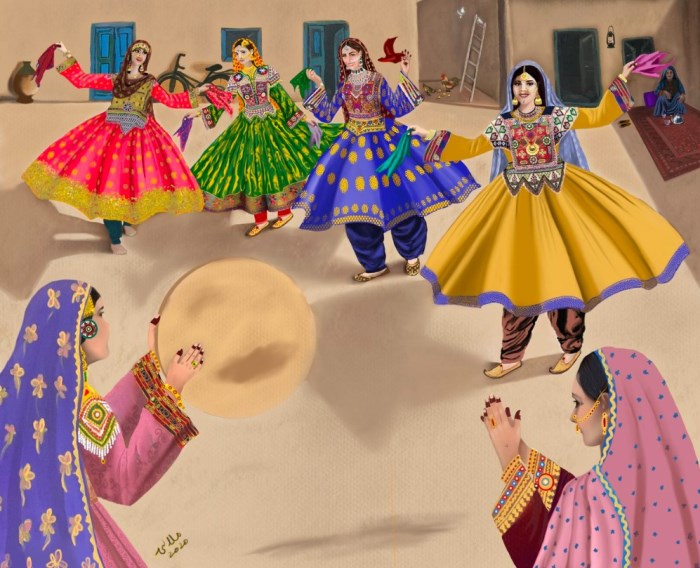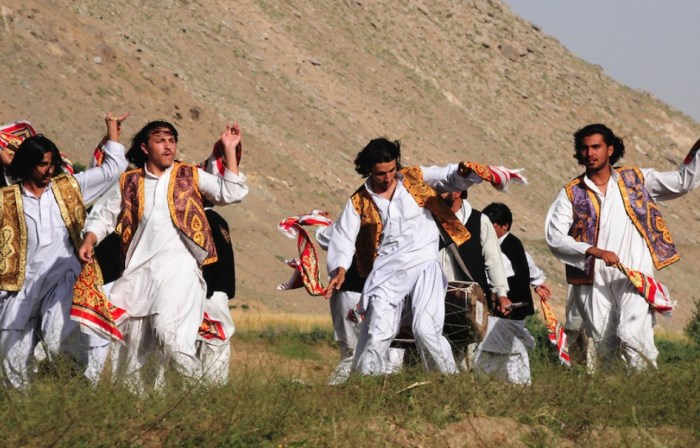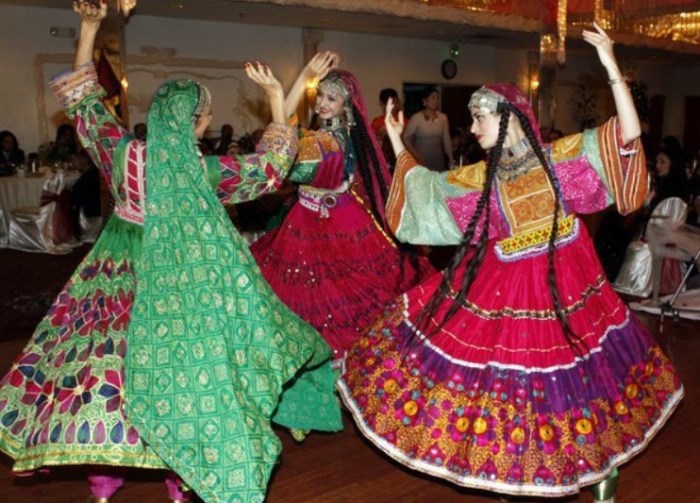From the mountains of Afghanistan, the Attan dance is a beautiful dance that has long been considered the national dance of Afghanistan. This folk dance has been an integral part of the people’s culture for centuries.
Known for its unique style, music, and costumes, if you’re looking to learn more about the Middle East’s culture and its people, the Attan dance is definitely a topic worth looking into.
Not only is it a beautiful dance, but it also holds significant value to the Afghans’ culture and society. You’ll find it performed at all of the major events in the local community, such as weddings and festivals.
Wants to know more?
In this article, you’ll get an in-depth dive into the history, styles, attires, music, and more of the Attan dance.
Table of Contents
What Is Attan Dance?
The Attan dance (Pashtun: اتڼ) is a social dance often performed in groups. The dancers form a circle and perform a series of twirls and steps to the rhythm of a drumbeat.
Traditionally, a Pashtun troupe performs the dance, displaying their martial prowess by waving swords and guns in the air. Some tribes substitute weapons for scarves.
In the past, the dance was segregated, with women and men dancing separately. But in modern times, tribes have begun to relax their rules.
Now, you can see men and women dance the Attan together freely!
The dance will be performed on the most special and joyous occasions in the local community. Religious festivals, weddings, and other significant celebrations in Afghan society.
Check more: Where Did The Zapateado Dance Come From?
Attan Dance Origin & History
Like most folk dances, it’s extremely difficult to pinpoint exactly who, when, and even where the Attan dance came to be.
Most records only showed that it’s a Pashtun dance with “pre-Islamic” roots. As such, the Attan dance could have been around since as far back as 3,300 – 1,300 BCE (over 5,000 years ago, give or take!)
Many historical records attributed the Attan as originally having been a religious ceremony of early Zoroastrianism.
Additionally, there are many references made to the Attan in Iranian mythology. King Yama, a major figure in the mythology, was written as having performed the Attan with his warriors to celebrate Nawroz (Iranian New Year).
Records also showed that the Attan is performed at the start of every war to motivate warriors to fight more fiercely.
You may have noticed that we’ve talked extensively about “Iranian” mythology, culture, and people, even though we said earlier that the Attan dance is Afghan.
The dance actually came from Pashtunistan, a historical region located on the Iranian plateau.
Today, this area is to the south of Afghanistan and northwestern Pakistan.
Attan Dance Styles
Attan, over the centuries that it has been around, has been adopted and modified by many tribes and people in the area.
As a result, there are many different variations of the Attan being performed. Each comes with its own styles, attires, and customs.
Kochai – Kochyano
The Kochai or Kochyano is a variation of the Attan in Afghanistan. The Kochyano Attan can be translated literally as: “the Attan of the Kuchi.”
Women typically perform this Attan during special occasions such as childbirth, the new year (nou rooz), and the start of spring.
Meanwhile, men perform it with long, straight-cut hair almost reaching their shoulders. They can also keep and style their beards into wild, unruly mustaches.
During the dance, the performers will twist, turn, and break into squats to the beat of the music. Men may walk with their knees bent or stand erect while snapping their heads in random directions to the beat of the Dhol.
All in all, the choreography is quite complex and includes up to 10 different steps.
As they are a nomadic people, the Kochyano has been influenced by the culture and dances of the many people and communities the tribe had passed through.
It’s why, if you’re knowledgeable of all the folk dances performed in the region, you’ll find many familiar elements between the Kochyano and other dances and variations!
Loragai
The name “Loragai” refers to the Afghan province of Logar.
Here, the dancers of the traditional flavor of Attan are best known for the rhythmic interruptions in the dance and music, as well as the beautiful trademark spins that set the Loragai from all others.
The spin involves a full 360-degree spin in place, ending with a clap.
As the dancers move around in a circle, they’ll raise their arms in the air, which will come together in one or two claps when they reach the center of the circle.
The dance circles of the Loragai are quite special: it’s not uncommon for there to be one or two smaller circles within the larger one.
Men and women typically perform this dance. But young boys and girls can also give it a shot.
Men can choose to wear turbans as part of their costumes. But as the dance speeds up, they’ll usually remove it so the sweat on their forehead won’t seep into the cloth and weigh down their heads.
Paktiawal – Khostai
Paktiawal or Khostai comes from the Pashtun communities (called the “Zadrans” and “Mangals”) living in the Paktia and Khost provinces of Afghanistan.
The dance is generally simpler than the Kochyano or the Loregai. The choreography consists of only five to seven Attan dance steps (but it can be much longer if the performer wishes).
The dance involves snapping the head left and right, causing the long, black hair of the dancers to fling through the air.
Eventually, the performance ends with the dancers turning medially and squatting with their arms to their sides and towards the center.
Shinwari
The Shinwari is performed by the titular Shinwari tribe, which lives in the Nangarhar province of Afghanistan.
Wardag – Wardaki
Wardag – Wardaki is another famous style of Attan, known as Da Wardag Attan.
Like the other Attan variations, the Wardaki style involves rapid body movements, turns, and twists.
As the dancers turn and twist their bodies, they’ll use handkerchiefs to accentuate their movements. One thing separates the Wardag from the other Attan variations: there’s usually no clapping.
Men performing the Wardaki Attan usually have mustaches and greased hair. These make their spotting movements look better and add more weight to their hair as they turn and twirl.
In some regions of Wardak, during the Wardaki (Wardagi) Attan, the leading men, followed by the rest, start singing a song at the start of the Attan.
Later, as the pace picks up and the dance gets faster, they stop singing and focus all their energy on breaking and expressing the fierce movements of the Attan.
Khattak
Unlike other variations, the Khattak comes from Pashtun tribes that live in Pakistan. Still, it shares many characteristics with its many Afghan counterparts, like the circular dancing motion and the droning beat of the drum.
But, as the tribesmen dance around in a circle, they also make hopping/skipping steps.
The Khattak also has a very martial feel, with the dancers typically incorporating swords and other weapons into their performances, twisting and twirling them around as they move.
Mehsud
The Mehsud Attan is an Attan style that originated from the Mehsud Pashtun tribe in Waziristan (a region in Pakistan).
During the performance, the male dancers with long, lustrous hair would flick it around while carrying guns.
They would fire their weapons into the air as they kneeled. The sound of the gunfire would create an echo that added to the fierce and proud energy of the dance.
Kabuli
The Attan has also been modernized in recent years by many dancers and artists in the area. And the result is the Kabuli Attan.
It’s quite popular in the Afghan capital of Kabul. And, it is often performed among non-Pashtun groups.
Kabuli is accompanied by modern music. The dancers move to the beat of the musician.
Both men and women can perform this dance together, which consists of only 2-5 steps, followed by a clap in the center of the dance circle before repeating the process.
Usually, a performance is accompanied by a live band, whose musicians can dictate the beat and the duration of the dance at will as they play their instruments.
How To Do The Attan Dance?
The Attan, as you can see above, will differ depending on the exact variation you’re dancing. But you can learn the basic, traditional steps if you want to give it a shot.
Note that since this is a group, circle-style dance, you’ll need to gather a group of friends or people who are also interested in learning to try it best.
Step 1. Form A Circle
Begin by forming a circle with your fellow dancers.
Hold one another’s hands and step forward with your right foot. Then, repeat with your left foot.
This will give the circle an undulating movement.
Step 2. Make Arm Movements
Add some arm movements as you continue to move in a circle.
You can raise your arms into the air as you step toward the center. Then lower them as you step back to the beat of the music.
Step 3. Make Some Spins
Next, add in some spins.
Turn to your right with your arms extended, then spin to your left with your arms pulled in.
Step 4. Make Some Footwork
As you spin, add some footwork to it.
Step forward with your right foot and bring your left foot up to meet it. Then, step back with your left foot and retract your right foot.
Step 5. Make Some Clapping
Clap your hands together. Or, you can clap your hands with the people on either side of you when you move toward the center.
Step 6. Waving The Handkerchief
Depending on the style of Attan dance you are performing, you may also use handkerchiefs as a prop.
Wave it in the air to accentuate your spins and twists.
Attan Dance Costumes
The costumes for the Attan dance can vary depending on the specific style and region in which it is performed. However, some common elements can be found in Attan costumes.
Surprisingly, during grand celebrations, Attan dancers usually don’t wear traditional garments. Instead, they would wear Western-style suits and ties.
Women often wear vibrant and colorful dresses. These dresses may feature small mirrors that symbolize light, adding an extra element of shine as the dancers move.
In some versions of Attan, Pashtun men have to grow out their hair and flick it in circular motions. Some may wear turbans, called Lungee, which hold great cultural significance since it indicates their tribal affiliation.
Attan Dance Music & Instruments
In most Attan styles (except Kabuli), traditional Afghan music is played and usually performs by a live band.
Musicians play a wide variety of instruments, such as the dhol (a two-headed drum), the tablah (also known as a “goblet drum”, a type of one-headed drum), and the zurna (a double-reed woodwind instrument).

Contemporary variations of the Attan, like the Kabuli, make use of modern music, which includes the use of electronic instruments and synthesizers.
Some Attan performances even incorporate popular Western songs into the dance routine.
Final Words
The Attan dance is a great representative of the Pashtun culture and people in Afghanistan and Pakistan.
Despite the many variations that have been born over the centuries, the Attan remains an integral part of Pashtun culture and identity, representing the people’s unity, strength, and pride.
What’s your favorite part about the Attan dance? Tell us in the comments!



